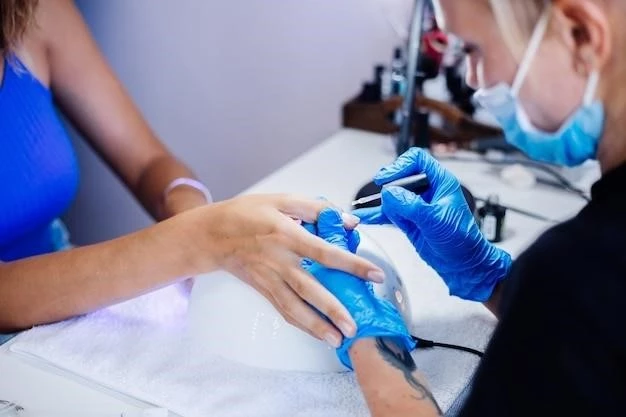Introduction
Onychomadesis is the acute separation of the nail plate from the nail matrix, leading to shedding of the nail. It can affect both fingernails and toenails, with various causes and clinical presentations.
Overview of Onychomadesis
Onychomadesis is the spontaneous separation of the nail plate from the nail matrix due to a temporary cessation of nail growth. It can occur in children, leading to nail shedding and discoloration, with various factors contributing to its development.
Causes of Onychomadesis
The causes of onychomadesis in children can be attributed to various factors, including mechanical trauma, autoimmune diseases, infections, and drugs, with some cases remaining undetermined. Additionally, severe systemic diseases and nutritional deficiencies can also contribute to this condition.
Factors Leading to Onychomadesis
Various factors can lead to the development of onychomadesis in children, including mechanical trauma, autoimmune diseases, infections, drugs, and undetermined causes. Additionally, severe systemic diseases and nutritional deficiencies can also contribute to this nail shedding condition.

Symptoms and Clinical Presentations
Onychomadesis presents as nail plate separation from the nail matrix, leading to nail shedding in a painless, proximal manner. It can affect both fingernails and toenails.
Recognizing Onychomadesis
Onychomadesis is characterized by the spontaneous separation of the nail plate from the nail matrix, starting at the proximal end, leading to painless shedding of the nail. It commonly occurs following hand-foot-and-mouth disease or as a result of various causes like trauma, infections, systemic diseases, drugs, or autoimmune conditions.
Diagnosis and Differential Diagnosis
Diagnosing onychomadesis involves recognizing the sudden separation of the nail plate from the nail matrix, typically originating from the proximal end. Differential diagnoses may include trauma, systemic diseases, infections, drug use, and other nail disorders.
Identifying Onychomadesis
Onychomadesis can be identified by the spontaneous separation of the nail plate from the proximal end, followed by painless shedding. It is associated with various conditions such as infections, autoimmune diseases, critical illness, medications, and systemic diseases. Recognizing this condition involves understanding its distinct clinical presentation and potential causes.

Treatment and Management
The treatment and management of onychomadesis involve addressing underlying causes like infections, autoimmune diseases, and nail trauma. Management may include supportive care, proper nail hygiene, avoiding triggering factors, and in some cases, consultation with a dermatologist for further evaluation and treatment.
Approaches to Treating Onychomadesis
Managing onychomadesis typically involves addressing underlying causes such as infections, autoimmune diseases, and drugs. Treatment may include supportive care, maintaining proper nail hygiene, avoiding triggers, and consulting with a dermatologist for further evaluation and treatment if necessary.
Prevention and Prognosis
Preventing onychomadesis involves addressing risk factors like trauma, infections, and systemic diseases. Prognosis generally involves temporary nail shedding, with most cases resolving without long-term complications.
Avoiding Onychomadesis
To prevent onychomadesis in children, it is essential to address risk factors like trauma, infections, systemic diseases, and drug exposure. Practicing good nail hygiene, avoiding potential triggers, and seeking prompt medical attention for any nail abnormalities can help in minimizing the risk of onychomadesis.
Complications and Associated Conditions
Onychomadesis may be associated with severe systemic diseases, nutritional deficiencies, trauma, periungual dermatitis, chemotherapy, fever, drug ingestion, and infections. Recognizing these conditions is crucial for appropriate management.
Related Issues with Onychomadesis
Onychomadesis is associated with conditions such as severe systemic diseases, nutritional deficiencies, periungual dermatitis, chemotherapy, fever, drug ingestion, and infections. Recognizing these related issues is crucial for appropriate diagnosis and management.
Case Studies and Research
Recent studies have focused on the diagnosis, treatment, and possible causes of onychomadesis following conditions like hand-foot-and-mouth disease. Research also explores the relationship between onychomadesis and systemic diseases, trauma, and infections, providing insights into effective management strategies.
Insights from Onychomadesis Studies
Studies on onychomadesis have provided insights into its association with various conditions and factors, such as infections, autoimmune diseases, and drug reactions. Research has also focused on the correlation between onychomadesis and specific diseases like hand-foot-and-mouth disease, pemphigus vulgaris, and systemic illnesses, shedding light on effective diagnostic and management approaches.
In conclusion, onychomadesis is a condition characterized by nail shedding, often starting at the proximal end due to various factors such as infections, autoimmune diseases, trauma, and systemic illnesses. Proper diagnosis and management are essential to address this nail disorder effectively, with the majority of cases resolving without long-term complications. Continued research and insights into onychomadesis contribute to better understanding and treatment of this condition.
